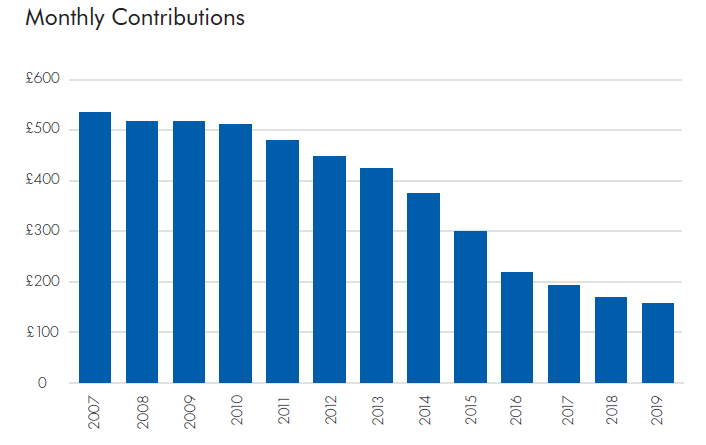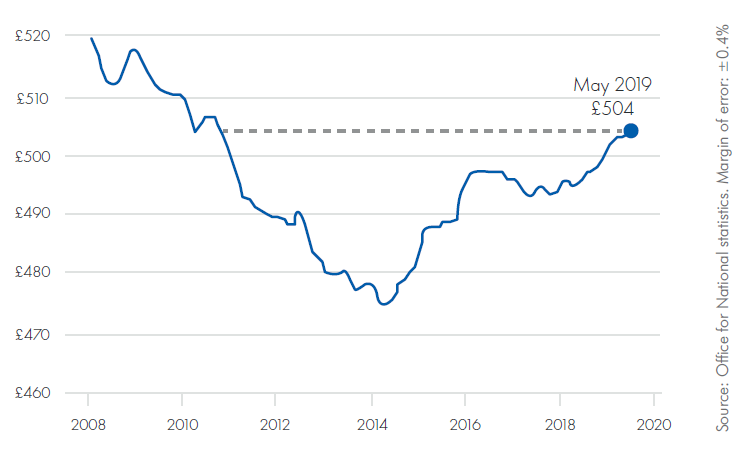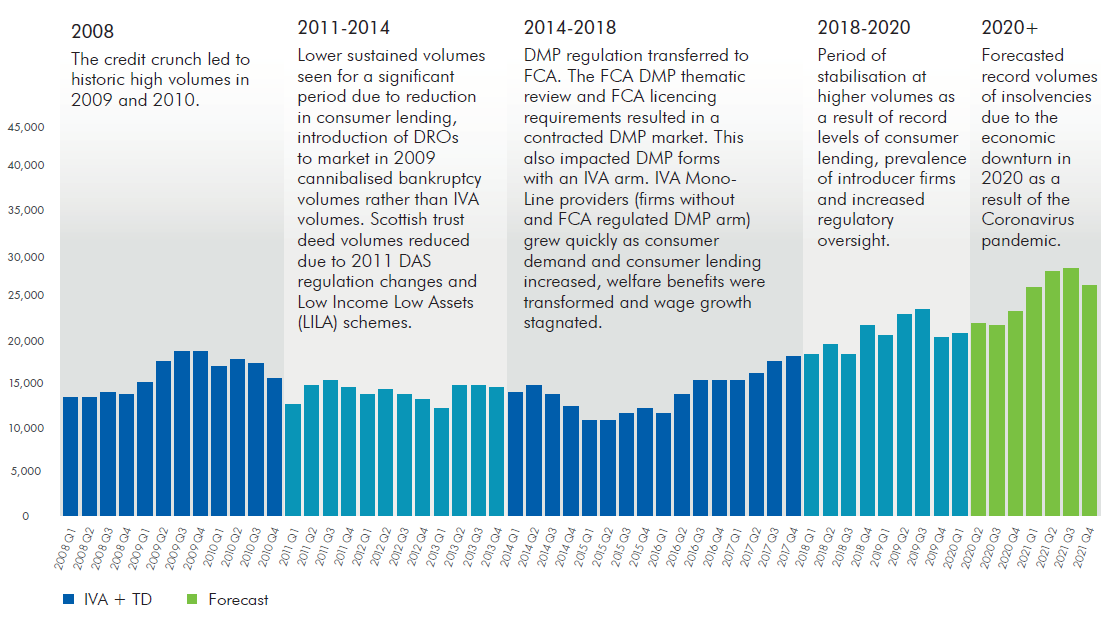By Maree Turner-Pearson, Product Manager and James Suffield, Senior Insolvency Portfolio Analyst
Predictions and analysis on the impact of COVID-19 on the insolvency industry
The UK, like the rest of the world, is in the early stages of a very sharp recession, the effects of which are likely to be long lasting for many consumers and businesses.
The number of people in the UK who will see their income reduced is expected to be significant. It is estimated that furloughs will affect more than 9 million people* and that the British economy could shrink in the second quarter by 35% resulting in 2 million job losses**. This will impact the ability for people to meet their financial obligations due to things like forced redundancies or reduced hours. These changes to employment statuses could drive temporary income shocks greater than other countries due to UK consumers having lower than average savings ratios***.
It is likely that a proportion of the population who previously had manageable levels of debt will be stretched further due to reduced income or job losses. This would inevitably increase the number of people finding themselves in financial difficulty and will likely drive an increase in individuals seeking debt advice or entering into debt repayment solutions.
What history tells us
Economic changes are a known driver for increased insolvencies.
Following the 2008 economic crash we saw a 23% increase in volumes of insolvencies in the 12 months post the start of the recession.

IVA contribution levels have decreased over the last ten years due to a reduction in consumers’ disposable income.

Following the crash, the average contribution for IVAs went from £545 to £506 and creditor distribution from 39% to 36% as consumers’ disposable income was reduced.
During 2020, the UK observed an all time high of consumers entering into new IVAs with an average contribution of £144 and creditor distribution of 25%.
The main driver for the reduction in contributions can be attributed to real wages dropping to the lowest level in 2014, and whilst these have steadily increased since that time, they still haven’t returned to 2008 levels so consumers remain worse off.
Real wages hold steady
Average weekly wages, adjusted for inflation.

We should prepare for an increase in consumers entering into insolvent solutions
TIX (The Insolvency Exchange) customers benefit from the dedicated analyst team that are working to model the impact of these guidelines to consumers in existing IVAs. We combine our data and analysis with information obtained from regulatory bodies and MI from IPs so that we can understand the impact this will have on new IVA volumes, existing plans and future payments.
When we combine all of this information it indicates that the volume of consumers entering into debt solutions is highly likely to increase, which will drive an increase in new insolvencies. The graph below provides a view of historic trends and an illustration of how insolvency volumes might increase during 2021.
The impact isn’t just limited to financial services either. As utility bills are classed as unsecured debts, they can almost always be included in an IVA. This includes gas, electricity, water, phone and even council tax arrears.

How is the Insolvency Service trying to minimise the impact for all stakeholders?
The Insolvency Service has issued a set of guidelines to insolvency firms which allows for flexibility to be applied to IVAs.
As a member of the IVA Standing Committee TIX has been working with The Insolvency Service and other industry members to provide clarity and consistency to IPs on dealing with customers who are impacted by Coronavirus whilst in an IVA.
A set of guidelines has been issued to insolvency firms that allows for flexibility to be applied to IVAs that are already being supervised and were drafted in accordance with the current protocol. It applies to previous versions by the IVA Standing Committee and new IVAs that are drafted from 20 April 2020.
These temporary measures cover aspects of the protocol such as how to handle payment breaks, reduction in income and the approach to income received from overtime for critical workers, to name a few. These measures provide the IPs with increased scope to apply their discretion, enabling them to support consumers more quickly and reduce the administrative processing that this would ordinarily drive across all parties based on the existing IVA protocol rules.
The full set of guidelines can be viewed on The Insolvency Service's website
What should creditors be considering when planning for the COVID-19 impact?
Creditors should be mindful that any spike in UK insolvency volumes could overwhelm their current processes or business due to the large amounts of documentation and requests for decisions and balance information thatare required for new IVAs. This demand will likely increase operational costs and potentially create consumer risk and exclusion from receiving a repayment, leading to financial loss for creditors.
There are a number of ways that creditors can prepare themselves for an increase in insolvency volumes:
- Ensure they factor increased volumes into their post COVID-19 planning so that an increase in volumes can be managed effectively, meaning consumers are treated fairly and consistently and debts are included in the arrangements for repayment
- Work closely with the high volume IP firms to understand how they are managing the impact to support consumers during this time
- Stay close to the regulatory updates so that changes to process can be factored into operational planning and forecasting
- Monitor the payments and manage exceptions where IVAs have not paid out as expected
If creditors do not have the ability to increase internal capability to manage the increased volumes of people going insolvent then an outsourced solution is a good option to maintain fair and consistent consumer treatment and ensure creditor interests are represented effectively.
TIX Insolvency Management
Download PDF version

Maree Turner Pearson, Insolvency Product Manager.

James Suffield, Senior Insolvency Portflio Analyst.
Sources:
*BBC https://www.bbc.co.uk/news/business-52209790
**The Office of Budgetary Responsibility (OBR)
***Oxford Economics - Savings, personal sector ratio